
Prerequisite Reading
We strongly recommend reading of our post “The Need for the Protestant Reformation” prior to reading this or any of the other Reformation posts we have written.

1481 Florence, Italy, Revival
An Italian Catholic Priest, Girolamo Savonarola (1452 – 1498), longed to see revival and reform come to the Catholic Church. His persistent preaching against the corruption in the Church brought upon him severe opposition, and like the Lollards and John Hus before him, he was condemned to die.
Though not well known today, Savonarola was an influential precursor to the Protestant Reformation.
In 1475, at age 23, Savonarola joined a Dominican monastery in Bologna, Italy. After one year he was ordained as a Catholic priest.
In 1481, at age 29, he was sent to the church and convent of San Marco in Florence, Italy, where he was to be a teacher to novices and to preach to local congregations.
Upon his arrival in Florence, Savonarola assumed the citizens would be living pure lives because of their culture and intelligence, as that city had been shaped by the Renaissance like no other city in Europe. Yet, when he arrived, he found it full of sin, with a passion for plays, festivals, and all types of worldly entertainment.
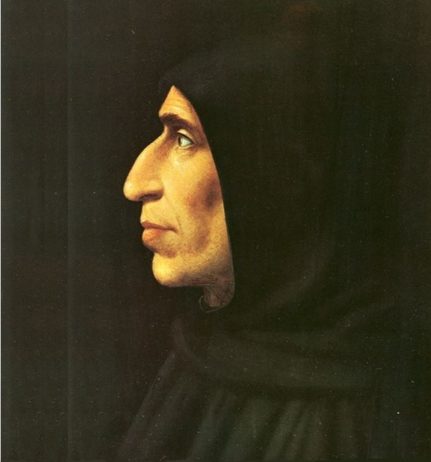
Girolamo Savonarola
Beginning in 1484, at 32 years of age, Savonarola left Florence and lived as an itinerant preacher with a message of repentance and reform. This was mostly in the northern part of Italy, in the region of Lombardi. The news about his preaching began to spread throughout all Italy, and when he returned to San Marco in 1490, the citizens of Florence were waiting for him with anticipation.
Upon his arrival in Florence, Savonarola began teaching the Book of the Revelation to the friars at San Marco. The common people heard of this teaching that was taking place, and they begged to be allowed to sit in on the teachings too.
By this time Savonarola’s preaching became extremely anointed, and the power in his words made such a great impression that his reputation began to spread even wider. Here are a few of the reasons why Savonarola’s preaching drew so much interest:
► Sermons were filled with the Holy Spirit’s conviction power–so much so that those in the audience would literally shake and tremble while he was preaching.
► People would stagger out of the church. It was as if they were left dumbfounded and speechless.
► Some would immediately break down and begin weeping.
► The weeping of the congregation and their repenting from sins would at times get so loud that his sermon could no longer be heard.
► He was very prophetic, and many of his prophecies came true.
► He strongly believed that God had sent him to Florence—the center of Italy—so “the Reformation of Italy might begin.”
The great humanist scholar, Giovanni Pico della Mirandola (1463-94), claimed that he could feel the hairs rise on the back of his neck when listening to Savonarola’s sermons.
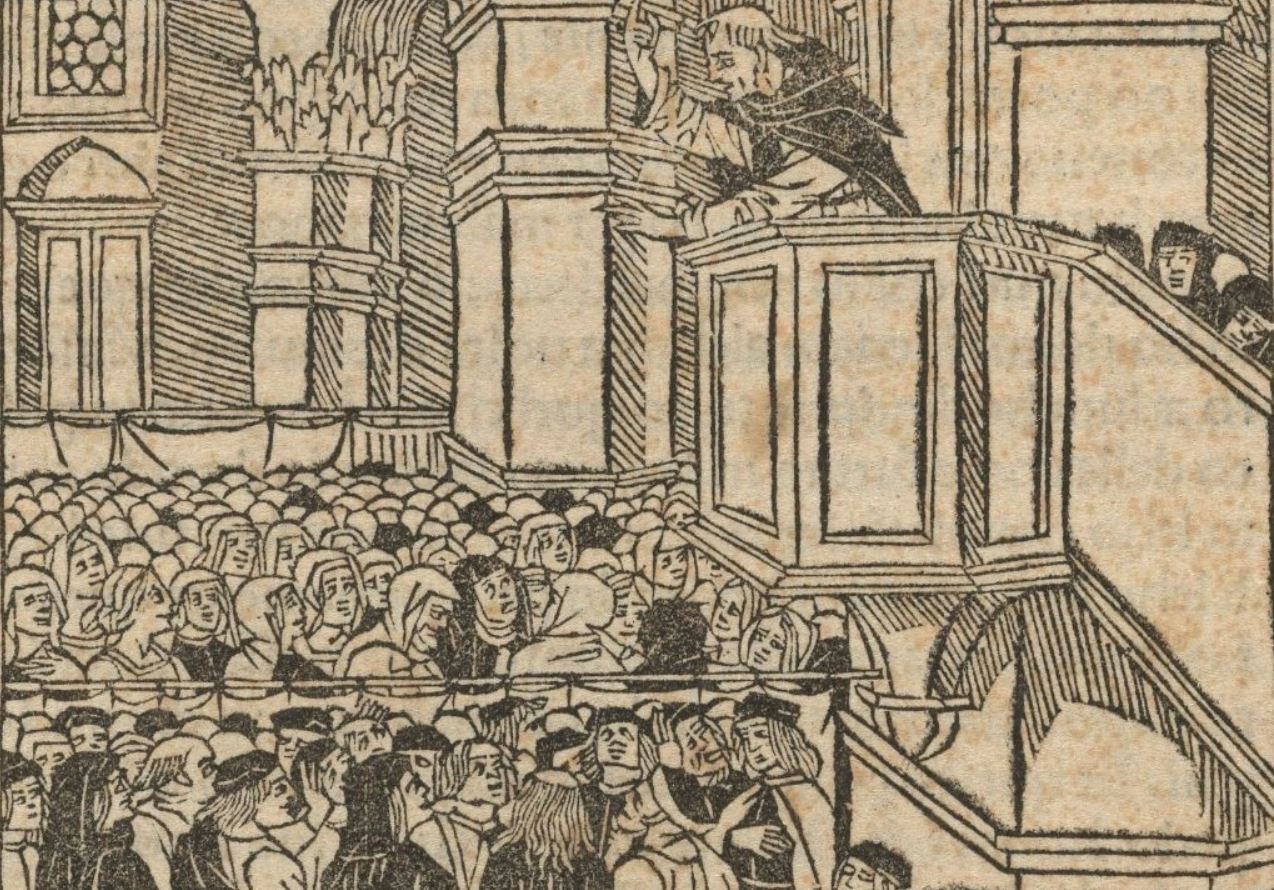
Savonarola preaching at San Marco convent (Inc 6316.10 (A), Houghton Library, Harvard University
Topics Savonarola’s Sermons Focused On
► All believers were part of the body of Christ, and they made up the true church
► God’s judgment and vengeance on sin
► Denunciation of the clergy’s rampant corruption, despotic rule, and the exploitation of the poor
► The sinfulness of luxury and wealth, as it led people away from God
► The worldliness and vice that was everywhere in Italy
► The Bible, with his sermons being expository (He preached directly from the Bible.)
Girolamo Savonarola, like most Christian Reformers, gave special emphasis to the authority of the Bible. He commented:
I preach the regeneration of the church, taking the Scriptures as my sole guide.
Notable Things About Savonarola
► He lived a genuinely holy life.
► He invested considerable time in prayer and fasting.
► His sermons were inspiring, but they were also laden with philosophical thought, as he had been a student of the great philosophers.
► On several occasions he was seen to go into a trance, or into a “state of ecstasy” and stay in a fixed position for five hours.
Evidence of Savonarola’s Spreading Fame
► People arose before dawn to line up at the door of the church to ensure they would get a seat to hear his preaching.
► If unable to gain entrance to the church, some would climb the iron grating and hang there for hours to listen to him preach.
► People would sing and rejoice as they walked along the streets on the way to the church to listen to his sermons.
► His sermons were so captivating that the people were surprised when he ended, because it seemed like they had just begun.
► There was an obvious anointing that accompanied him, as if he was moved upon by a power not his own.
► The majority in the city of Florence was captivated by him.
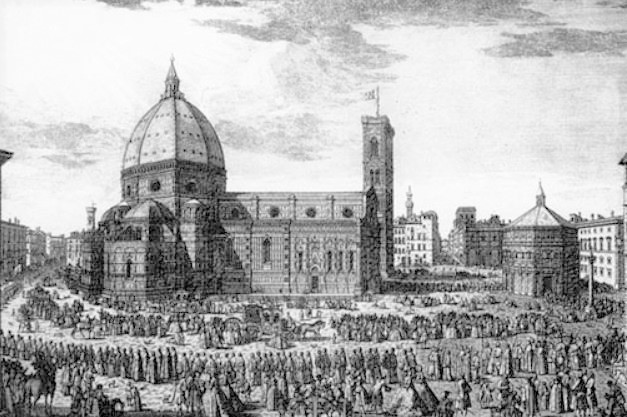
Cathedral of Saint Mary of the Flower (procession outside the church)
Transfer to Larger Church
To accommodate the larger crowds, Savonarola was transferred to the larger Florence Cathedral (Cathedral of Saint Mary of the Flower).
Francesco Guicciardini, an Italian historian and political writer of that era, said this about Savonarola and his ministry:
The work Savanarola did in promoting decent behavior was holy and marvelous. Nor had there ever been such goodness and religion in Florence, as there was in his time.
Drawing the Ire of Authorities
Savonarola did not preach or teach to please anyone but God, and by so doing, the anger of both the civil and church authorities began to rise.
The local ruler of Florence, Lorenzo de Medici, made numerous attempts to bring an end to Savonarola’s influence, but he always failed.
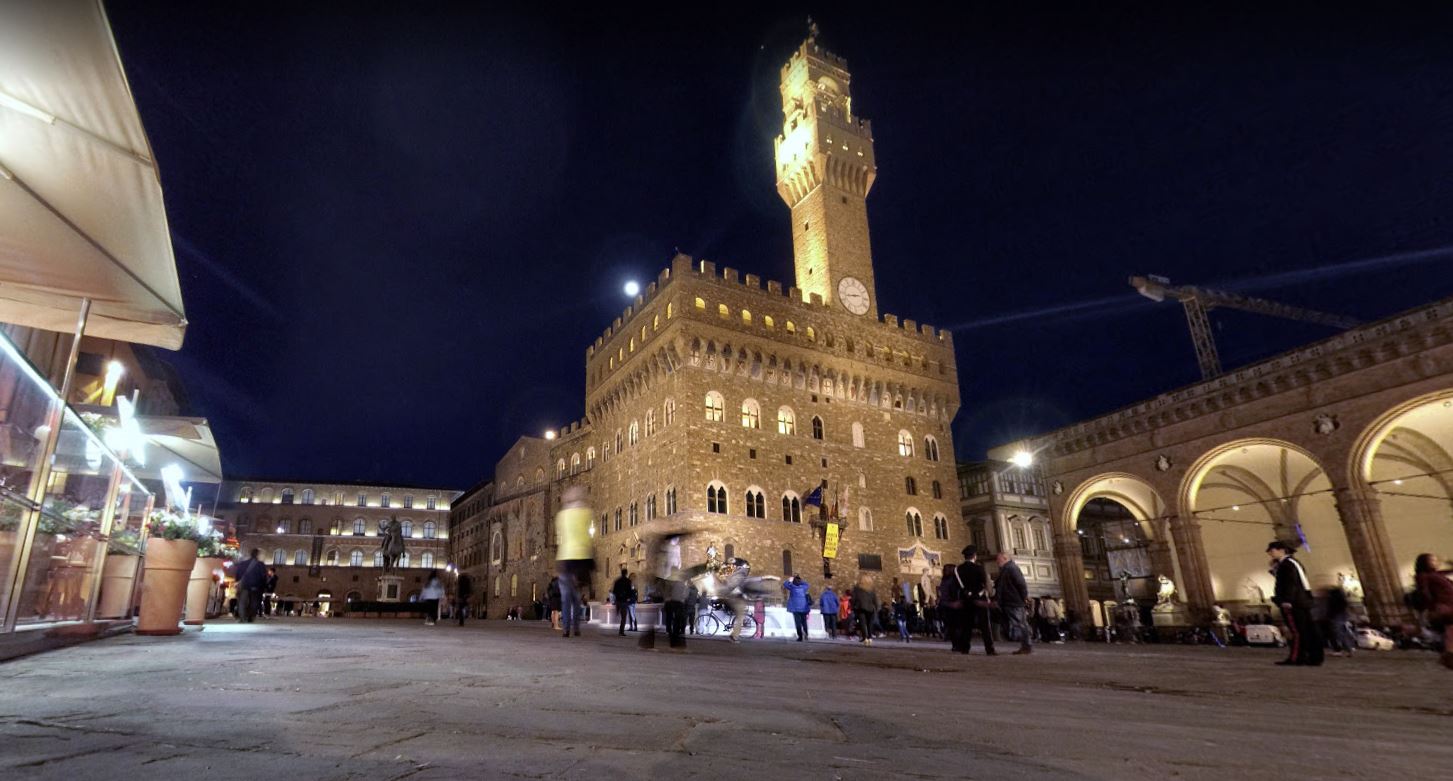
Piazza della Signoria, where the “Bonfires of Vanities” took place. This was also the same plaza where Savonarola was executed.
Short-lived Theocracy and Severe Legalism
Starting in February 1495, during the time when the festival known as Carnival happened, Savonarola inspired the residents of Florence to occasionally build large bonfires in the Piazza della Signoria. The objects to be burned were those which he said were a hindrance to people’s spiritual health. These fires have famously been referred to as “Bonfires of Vanities.”
Into the bonfire were thrown objects that were deemed to have no religious value, or that would only contribute to a person’s vanity, such as:
► Carnival masks
► Books of divination, astrology, and magic
► Playing cards and gaming tables
► Mirrors
► Cosmetics
► Expensive clothing
► Incense
► Musical instruments
► Immoral books
► Secular songs
► Tapestries
► Antique and modern paintings
► Sculptures
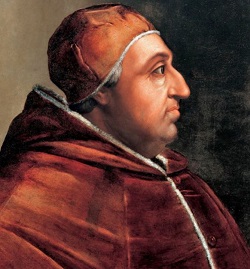
Pope Alexander VI
Debauchery and Corruption
Pope Alexander VI, similar to many other popes, was not a godly man. Popes often led lives of open immorality, exploited the poor to accumulate wealth, and engaged in shameless nepotism. It was for these reasons that this pope was severely attacked by Savonarola, who saw him as a sham religious leader.
The Focus of Savonarola’s Attacks:
► The wealthy
► Government and Church officials
► He called the pope the Antichrist
► He called the Catholic Church “The Great Whore” of Revelation chapter 17
► He said the Church in Rome made a mockery of Christ and the saints, and that they were worse than Muslims.
► The Church’s trafficking of and financially benefiting from the sacraments.
► The Church selling positions of leadership to the highest bidder.
Excommunication of Savonarola
In 1495 when France invaded Italy, through Savonarola’s influence Florence did not join Pope Alexander VI’s Holy League against the French. Savonarola was then summoned to Rome to appear before the pope, but he refused to appear. He also refused to stop his preaching against the Church. Because of his rebellion against Church authority, in May of 1497 Pope Alexander VI excommunicated Savonarola.
Florence Turns Against Savonarola
The pope enhanced his pressure against Savonarola by threatening the citizens of Florence with a censure (interdict). This censure was supposedly a powerful spiritual weapon against dissidents. If such an interdict was in place, it supposedly had the power to cancel the validity of any church ritual during the entire time the censure was in effect.
The government of Florence, feeling the political and spiritual pressure, began to turn against Savonarola.
Trial by Fire
In April 1498 a rival Dominican proposed that Savonarola be tested to determine if God approved of the pope’s excommunication of him. This test was to be a “Trial by Fire,” with Savonarola being required to walk barefoot through coals of fire. If he was innocent, God would protect him from the flames.
Some historians said it rained that day and the trial couldn’t proceed. Whatever the reason, the Florentines were furious, not being able to see this trial carried out. The mob that had gathered to see the “Trial” was so angry that they forced their entry into the church of San Marco, arrested Savonarola and two of his followers, and had them tortured by secular authorities.
Later, in a church trial, with representatives of the pope being present, Savonarola and his two followers were found guilty of heresy and were sentenced to death.
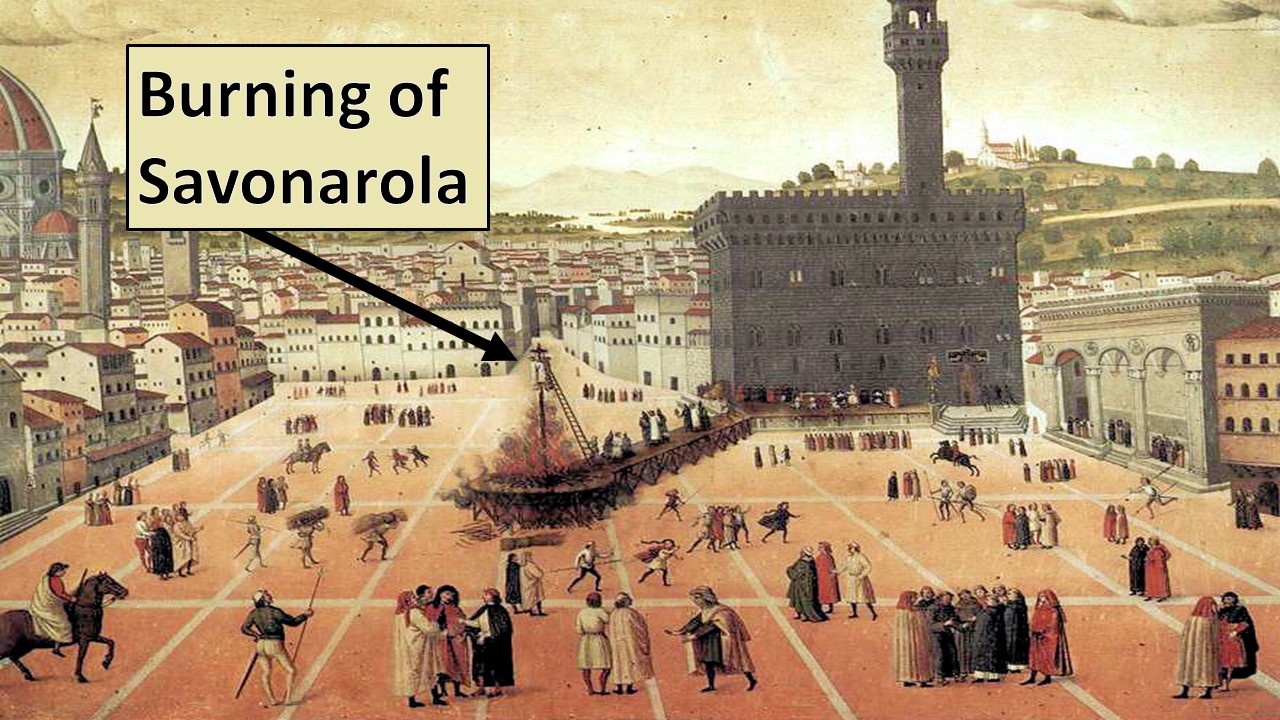 Savonarola and two of his partners were hung and burned in the Piazza della Signoria, on May 23, 1498.
Savonarola and two of his partners were hung and burned in the Piazza della Signoria, on May 23, 1498.
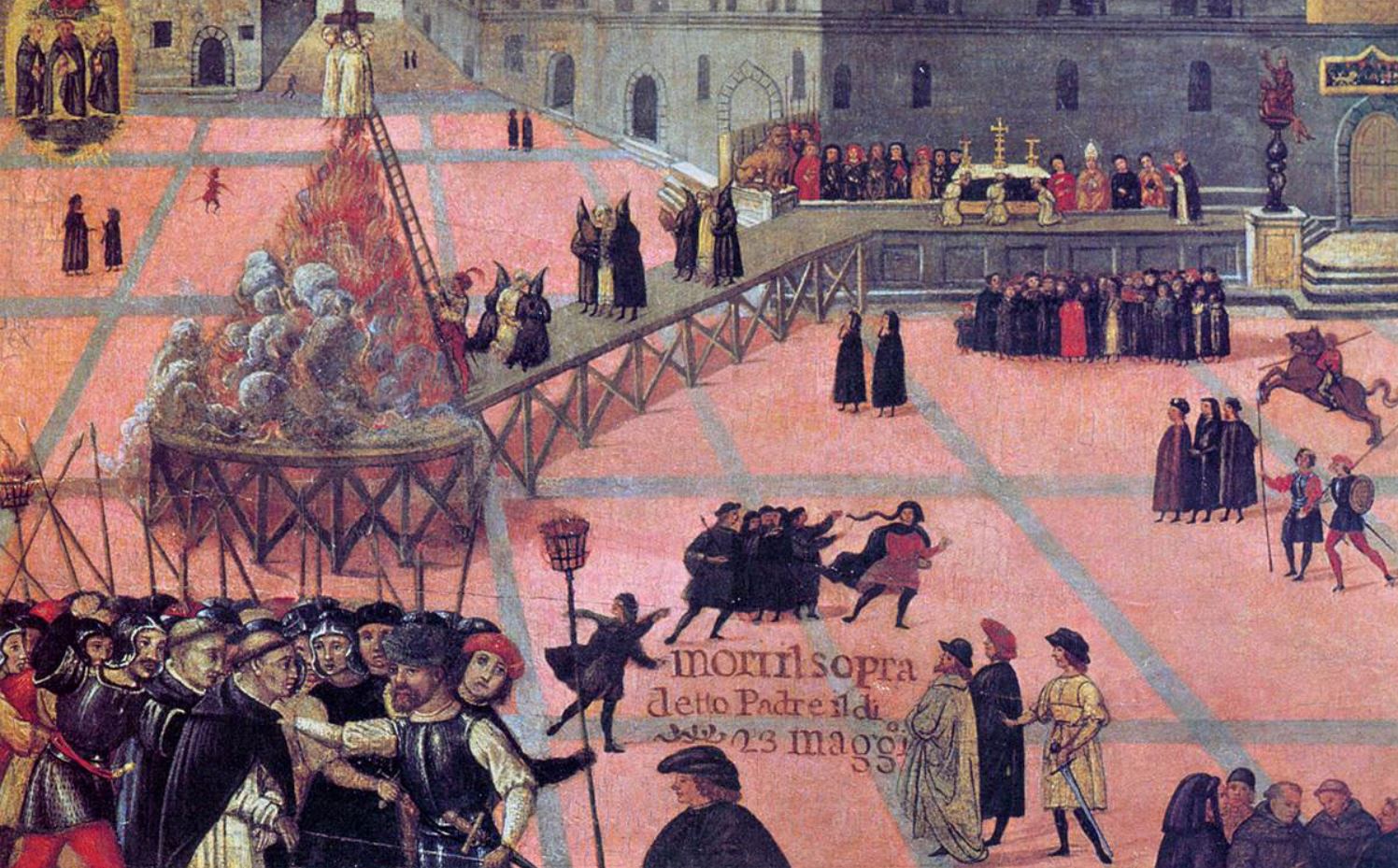
Close-up of painting of the execution of Savonarola
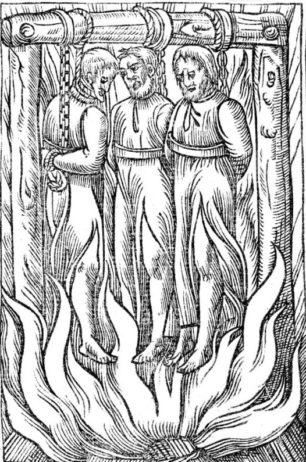
Burning of Savonarola
Execution of Savonarola
On May 23, 1498, elaborate gallows had been erected in the Piazza della Signoria. All three of those convicted were hung, burned in the flames, and, to prevent any remains (relics) from being kept and venerated by his followers, the ashes were thrown into the Arno River.
Six years later, in the same plaza where he died—the same plaza where he had inspired people to burn art and other items that distracted them from their spiritual lives—one of the world’s most famous sculptures was placed. Michelangelo’s David, as well as four other nude statues—supposedly art—are said to enable admirers to reach deeper levels of spirituality.
Results of the Revival
The friars of San Marco did not let Savonarola’s death pass in vain, for they venerated him as a saint and encouraged nuns in surrounding towns to draw from his example.
In 1530, Pope Clement VII, with the help of soldiers of the Holy Roman Emperor, hunted down, tortured, imprisoned, and exiled the followers of Savonarola, known as the Piagnoni.
As with all reformation movements prior to Martin Luther (Waldensians, Lollards, Hussites), this effort ended in the brutal death and slaughter of thousands that were supportive of that movement.
Pre-Protestant Reformation efforts cannot be looked at by themselves and be labeled a failure merely because the ultimate objective of the reform effort was not immediately achieved. Each movement was a stepping stone upon which successive reformers built and drew courage.
Legacy of Savonarola
► His religious ideas found a reception in Germany and Switzerland among the early Protestant reformers, most notably Martin Luther.
► Luther’s doctrine of Justification by Faith was inspired by Savonarola.
► His writings were translated and published in France, contributing to the rise to the French Protestants, known as the Huguenots.
► Similar to what the Catholic Church has done with their saints, they repackaged Savonarola’s history as being a non-threatening devotional personality.
Sources
► Acts and Monuments by John Fox
► Girolamo Savonarola by Wikipedia
► Revivals Their Laws and Leaders by James Burns
► Savonarola: a Tragedy by Austin, Alfred, 1835-1913
► Savonarola by George M’Hardy
► Savonarola: The Florentine Martyr by Elizabeth Warren
► Savonarola and the Bonfires of the Vanities by The History Guy
► The Life of Girolamo Savonarola by Roberto Ridolfi
► Savonarola: His Life and Times by William R. Clark
► Life and Times of Girolamo Savonarola by Pasquale Villari
► The Ten Greatest Revivals Ever by Elmer Towns
► The Unarmed Prophet: Savonarola in Florence by Rachel Erlanger
Return to List of Revival Stories
Chet & Phyllis Swearingen
(260) 920-8248
romans1015@outlook.com
Beautiful Feet
P.O. Box 915
Auburn, IN 46706

